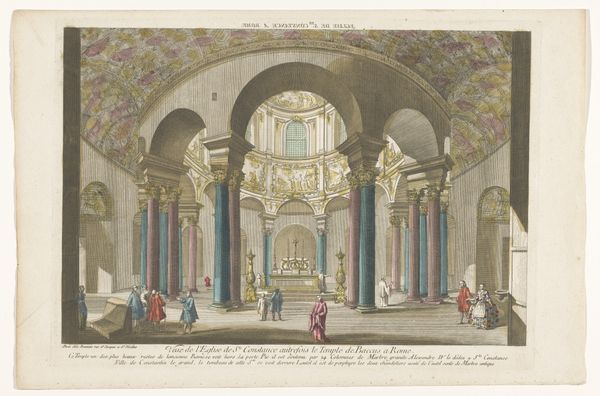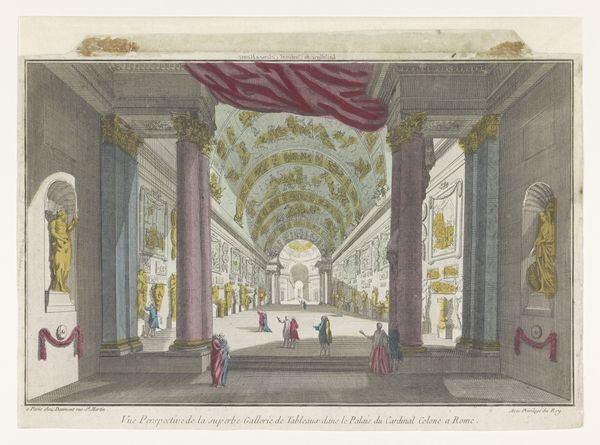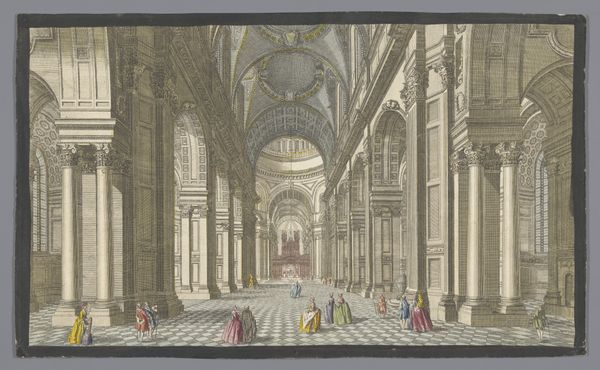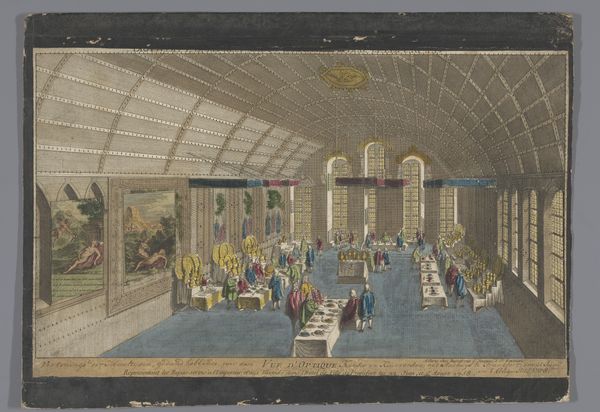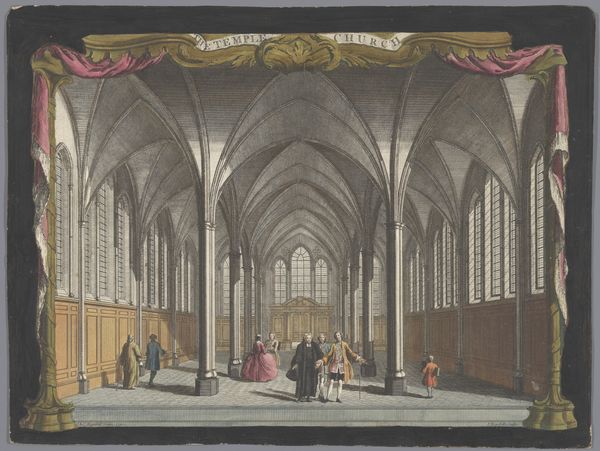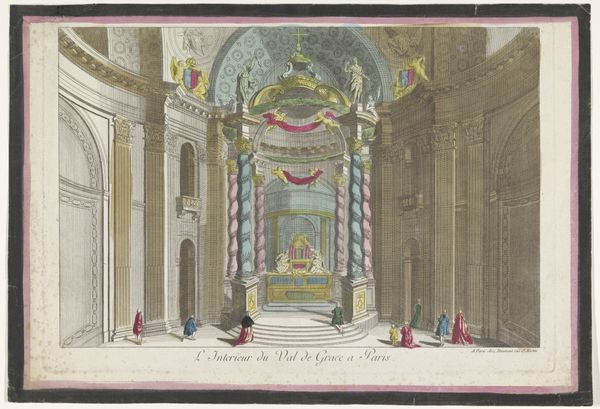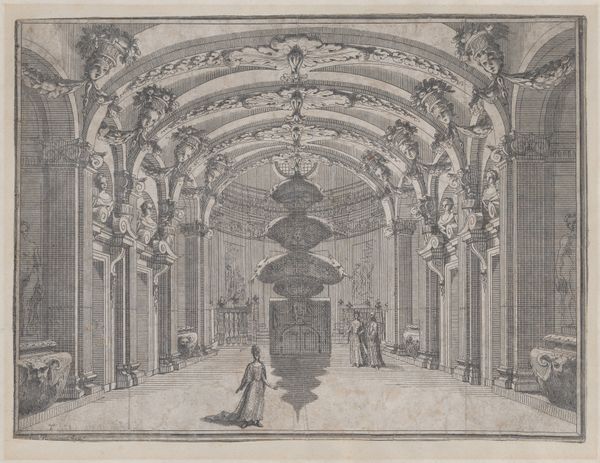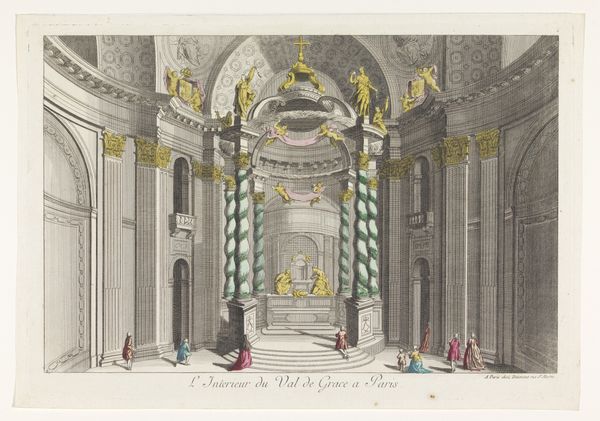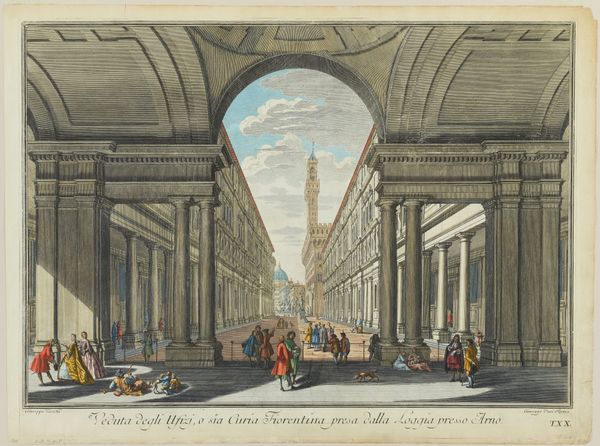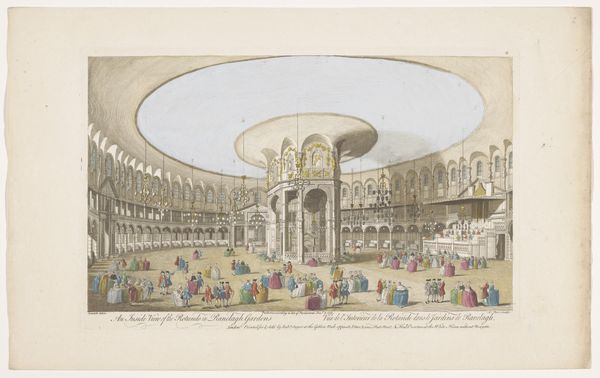
Gezicht op het interieur van de kerk Saint Martin-in-the-Fields te Londen 1745 - 1775
0:00
0:00
jeanfrancoisdaumont
Rijksmuseum
drawing, watercolor, pen
#
drawing
#
water colours
#
perspective
#
personal sketchbook
#
watercolor
#
coloured pencil
#
pen
#
cityscape
#
art nouveau
#
genre-painting
#
rococo
Dimensions: height 299 mm, width 439 mm
Copyright: Rijks Museum: Open Domain
Curator: Looking at this image, I am immediately struck by a sense of theatrical grandeur. It's as if the church is a stage, with those elegantly dressed figures as the actors. Editor: Indeed. What we're seeing is "View of the Interior of Saint Martin-in-the-Fields, London" by Jean-Francois Daumont. This work, created sometime between 1745 and 1775, uses pen, colored pencil, watercolor and water colors to depict a scene that speaks volumes about the period’s aesthetic sensibilities and the place of the church within London’s social fabric. Curator: The Rococo style is so prominent here. That airy color palette, the focus on decorative elements, but even more interesting for me is thinking about how buildings shape behaviors, even dictate it! And this is no common gathering: bodies parade and interact within these boundaries that are physical as much as moral. Editor: Right. Daumont’s rendering gives us access to how the Enlightenment sought to shape not only sacred spaces but also civic life through architecture and its public role. This was a period of tremendous church-building in London; Saint Martin-in-the-Fields itself was quite new when this drawing was made, having been completed just a few decades prior. Curator: And by capturing this interior scene, Daumont’s piece documents social performativity inside the church; a perspective that helps understand better the way space and design can play a significant role in the making and display of social identity and political meanings. Editor: I would suggest that by showing these figures occupying and animating this new church, Daumont highlights not only the architectural marvel but the Church's ambitions, power, and function within a rapidly changing city. How spaces of worship also represent and actively reinforce power structures. Curator: It's like he's inviting us to contemplate how these places were constructed – both literally and figuratively – to shape public behavior and moral values, where social hierarchies come together under the auspices of the divine. Thank you! It gave me much to think about. Editor: Likewise! The intersection of art and socio-political history always reveals complex narratives.
Comments
No comments
Be the first to comment and join the conversation on the ultimate creative platform.
